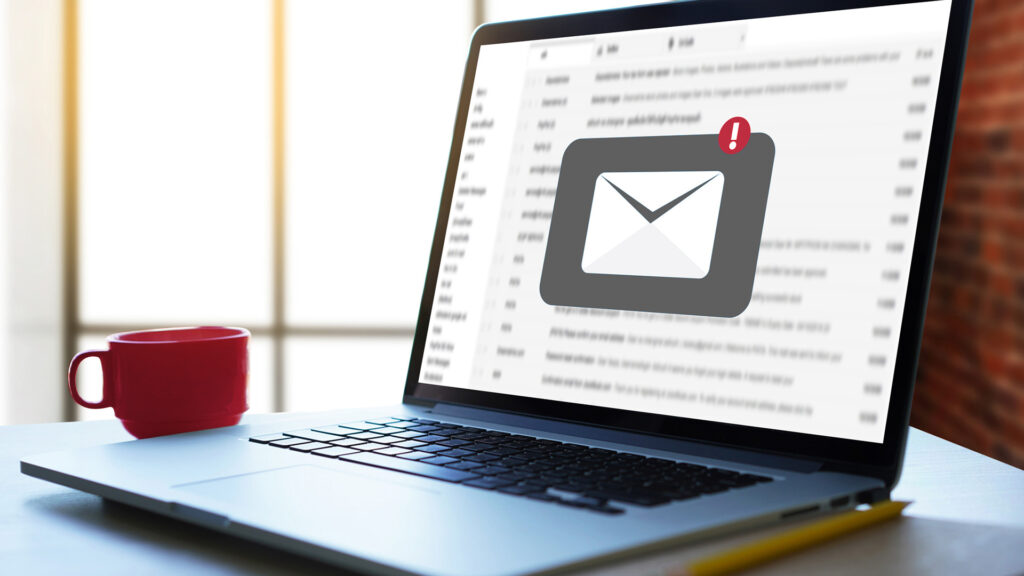Email Marketing Best Practices, Part 1
Email remains an essential component in the marketer’s toolbox, as it enables the delivery of targeted content to drive engagement and nurture business relationships. In fact, half of marketers identify it as their most impactful channel.
However, simply composing and sending an email isn’t enough. For starters, even the most well-crafted emails can end up in “no man’s land”— a.k.a. the much-feared spam folder.
To ensure your messages reach their intended recipients, it’s important to have an understanding of common spam “flags” and to implement the right steps to avoid them:
-
Use A Reputable Email Service Provider (ESP)
These folks have established relationships with Internet service providers (ISPs), so they have a strong sender reputation, have tools for managing email lists and tracking metrics, and also help ensure compliance with anti-spam laws.
-
Practice List Hygiene
This is also crucial for maintaining a good sender reputation. To do this, use double opt-ins to confirm subscribers’ intent to receive your emails, and regularly clean your list of inactive or unengaged contacts. Take note that sending emails to outdated or purchased lists can result in high bounce rates and complaints, oftentimes resulting in a one-way ticket to Spamville. (For more on this topic, read our post “Thinking of Buying an Email List? Better Think Again.”)
-
Optimize Email Content
Excessive usage of all-caps, exclamation points, and spammy words and phrases like “free,” “guarantee,” or “act now” are common red flags, not only in the subject line but in the email body as well. Other flags include too many links, overly large images/file sizes, and sending frequency.
-
Authenticate Your Domain
This helps ISPs verify that your emails are coming from a legitimate source. Implementing SPF (Sender Policy Framework), DKIM (DomainKeys Identified Mail), and DMARC (Domain-based Message Authentication, Reporting & Conformance) can reduce the chance of your emails being interpreted as spam, and help prevent spoofing and phishing attempts. (As one example, read about Mailchimp’s domain authentication here.)
#ProTip: Google and Yahoo have rolled out new sender requirements, so be sure you conform. Read about them here.
-
Comply With Regulations
Ensure your emails toe the line with regulations such as the CCPA and CAN-SPAM Act in the US and GDPR in Europe. There is an array of rules, and non-compliance can result in hefty penalties and brand reputation damage.
-
Include An Unsubscribe Option
This is not only a legal requirement but helps keep your email list healthy, since it reduces spam complaints and ensures only interested individuals are receiving your content. Keep this process simple and hassle-free.
-
“Warm Up” New IP Addresses
If you’re just beginning email marketing, start with a small list of verified subscribers and gradually build up in email quantity and frequency to keep the gatekeepers from being freaked out by sudden mass mailings.
-
Keep An Eye on Trouble Spots
It’s important to monitor not only email performance and engagement, but also numbers that can place you in the danger zone, such as spam complaints and hard bounce rates. Also, monitor your domain for blacklists, negative reputation, etc.
#ProTip: Before sending out an email campaign, test it using spam-checker tools to identify and correct any potential issues that could trigger spam filters—better you than them.
Improving deliverability is the first part of ensuring a successful email marketing campaign. It’s true what they say—an ounce of prevention is worth a pound of cure, so employ these steps before hitting the send button.
Next month, we’ll talk about what marketers can do to make their emails stand out in crowded inboxes once they’ve bypassed the spam filter hurdle.
**
Need help conducting successful email marketing campaigns? Our team of professionals can help ensure your emails not only reach inboxes but also resonate and perform to drive conversions and revenue. Let’s talk today.

